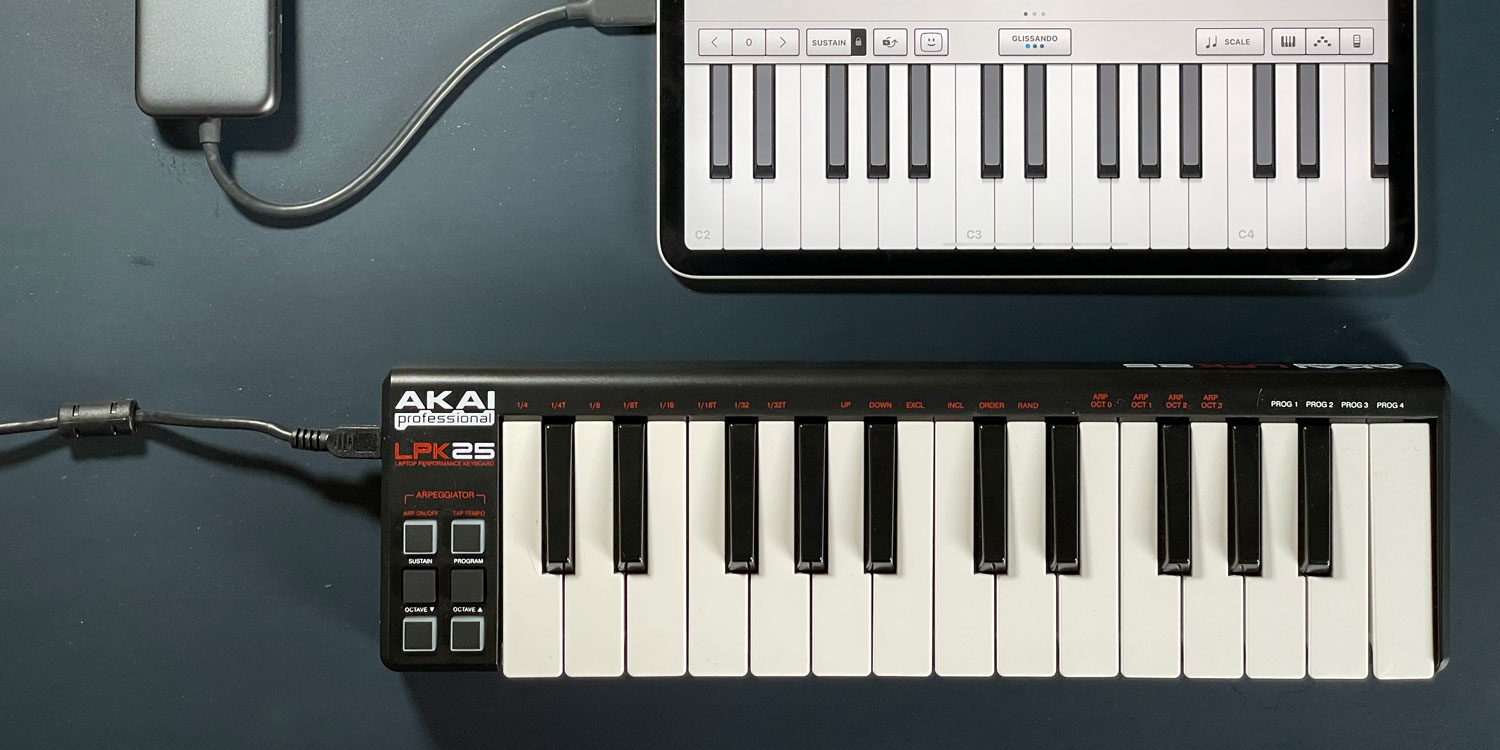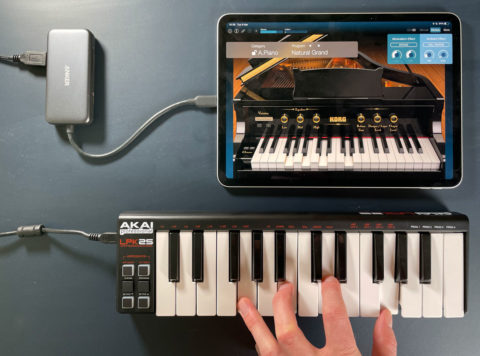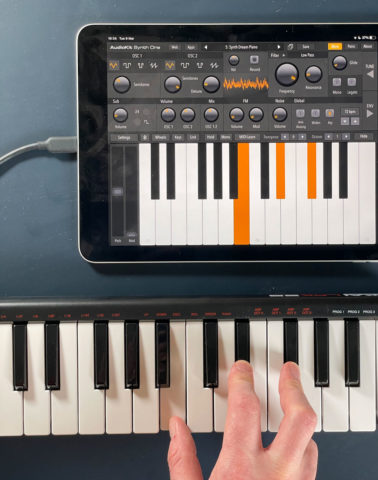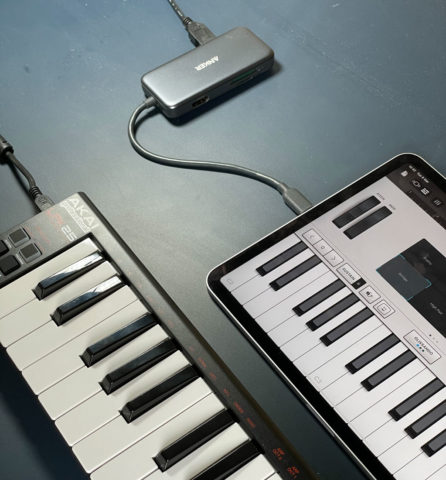The potential for making music with apps is huge. English virtual band Gorillaz paved the way – their 2010 album The Fall was composed entirely on a first-generation iPad during hotel room downtime, and the technology has only gotten better and easier to use since then. Apple’s free GarageBand app is a surprisingly powerful music-making machine, while KORG offers a range of synthesizer apps that replicate expensive vintage kit for a fraction of the price.
But actually playing those virtual instruments isn’t easy on a touchscreen – especially if you’re using a relatively small device. The solution is to plug in a MIDI controller and lay down your tracks with an actual physical instrument.
Synthesizers and pianos used to be prohibitively expensive for the casual hobbyist, but these days you can pick up a small MIDI keyboard for around $50 and simulate both on your Apple device. (We’re using an iPad as it has a bigger range of music apps, but the MIDI controller would work just as well on an iPhone.) Not only does this make playing music a lot easier – chords especially – but many of these MIDI devices also include drum pads so you can tap out a backing beat too.
First, of course, you’ll need to buy a MIDI controller. There are plenty of them out there and the good news is that they more or less all work the same way. For our testing we used an AKAI LPK25 (around $50/£40) as we liked its compact form factor and pressure-sensitive keys, but any MIDI keyboard should work. Spend a bit more and you can get more octaves, bigger keys, and drum pads.
Most of these keyboards come with USB cables, which means you’ll need an adapter to get it hooked up to an iPhone or iPad. If your device has a Lightning port you’ll need to buy a Lightning to USB Camera Adapter like this one. If you have device with USB-C, you’ll need to pick up a USB-C to USB adapter instead. Don’t feel obliged to buy Apple’s branded cables – shop around and there are plenty of cheaper alternatives.
Or, if you already have a USB-C multi-port adapter lying around like we did (pictured below) that will work just fine too.
Once you’ve got all the requisite kit, simply plug the controller into the iPhone or iPad. That’s it! Unlike the old days of desktop computers, there are no drivers to install or settings to fiddle with. iOS will automatically recognize the device. You’ll see a connection icon appear in the status bar briefly to show it’s worked.
Then, simply load up an app that’s compatible with MIDI keyboards. GarageBand is a great place to start – load it up and choose Alchemy Synth from the instruments menu. You can choose a specific keyboard sound by pressing the name of the current voice at the top of the screen. There are loads to choose from!
But GarageBand is far from your only option here. Search the App Store for synths or pianos or drum kits and you’ll find a great many of them will automatically work with your new kit. Now all that’s left to do is write a crushing synth ballad for the ages!




